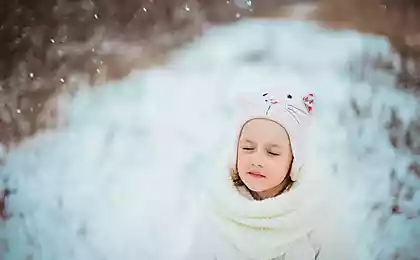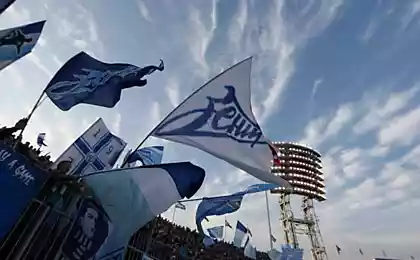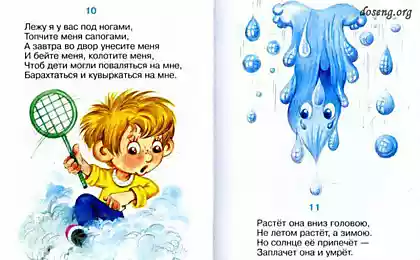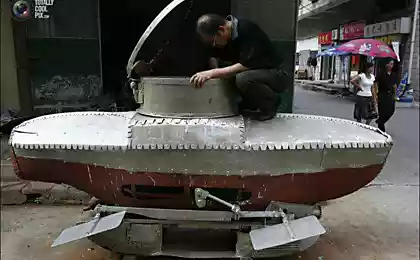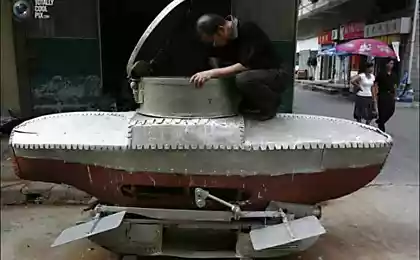649
Often we do not know who built them, and how such
The world is full of ruined cities, but some of them are so mysterious story that it defies the imagination. Often we do not know who built them, and how that could be created in ancient times.
1. Çatalhöyük, Turkey
In 7500-ies BC. e. this city in Mesopotamia (modern Turkey) was inhabited by thousands of people. Historians believe that Çatalhöyük is one of the first human settlements in urban, but the culture of the people inhabiting it, is not like anything to which we are accustomed.
First of all, the city is built in the form of a honeycomb, where homes are separated by walls and doors are made in the roof. People walked these streets, rooftops, and to get into the living room, down the stairs. Doorways were often marked with bull horns and deceased family members buried in the floor in each house.
What happened to the people who lived in this city and its culture, it is unknown. Their architectural style seems to have been unique, though, archaeologists found many statues of the goddess of fertility, reminiscent of similar objects of worship found in other cities of the region. So it is quite likely that, when the city was abandoned, its culture is reflected among other peoples of the Mesopotamian region.
8 photo
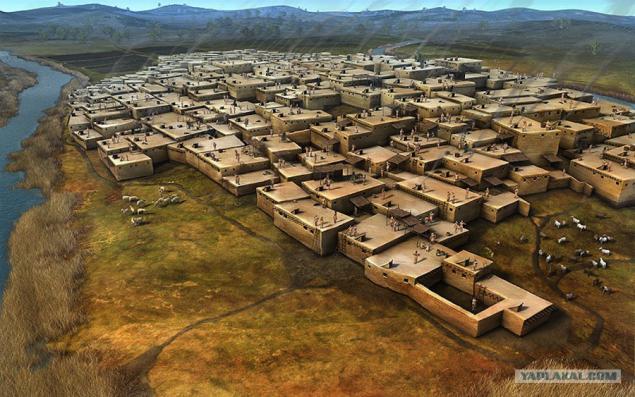
2. Palenque, Mexico
Palenque - one of the largest surviving Mayan city-states. We can say that the town symbolizes the whole secret of their civilization before the Maya dominated the greater part of the territory of modern-day Mexico, Guatemala, Belize and Honduras, and then disappeared. Although the descendants of the Maya still thrive in Mexico and Central America, no one can say exactly why the Mayans abandoned the big cities and eventually abandoned them about the 1400s.
Palenque heyday came in the classic period of the Mayan civilization, about 700-1100 Tide years BC. e. As in many cities the Maya of Palenque were temples, palaces and markets. However, in Palenque is home to some of the most detailed sculptures and inscriptions left by the Mayan civilization from which to draw information about the history of this people: battles, rulers and everyday life. Theories of why this city and many other Mayan cities were abandoned, include war, hunger and climate change.

3. Cahokia, USA
Located on the other side of the Mississippi River opposite the modern city of St. Louis, Cahokia for hundreds of years has been the largest city in North America. Its inhabitants built huge earthen buildings, and some of them can be visited even today, as well as large areas served, apparently, as a market and meeting place. There is evidence that its residents have used very sophisticated farming methods and a few times a year redirected Mississippi tributaries for irrigation.
As in the case of the Maya people of Cahokia heyday came in the Tide 600-1400 years BC. e. No one knows why the city was abandoned by its inhabitants, as well as how the region can live in ancient times as many people - for hundreds of years the city's population was at least 40-thousand people.

4. Derinkuyu, Turkey
Derinkuyu - a huge underground city, existed in the early Byzantine era. Date of foundation of the city is unknown, but some sources suggest that this happened in the VII-th century BC. e. But really the city has grown in the period between 500-1000 mi years BC. e .: At this time there were five underground levels, where 20 thousand people were living with the cattle, and there were kitchens, churches and wineries.
Local residents have dug tunnels and rooms beneath their homes in the soft sand of volcanic rock in the central Turkish region of Cappadocia. In the Middle Ages it flourished here a whole underground civilization. City could serve as a model for any future community trying to survive after the apocalypse.
For centuries, people have fled to the area to find a safe haven from anti-Christian Romans, bandits, and later by anti-Christian Muslims. Inputs can be closed by massive stones, and ventilation shafts provided access to the air depth. In the end, even they were dug long tunnels for communication with other Derinkuyu underground cities in the region. At some point after the X-th century the city was abandoned, and in 1969 opened to the public.

5. Pompeii, Italy
There is ample historical record, is evidence that the Roman city of Pompeii was buried under a layer of rock after the catastrophic eruption of the volcano Vesuvius in the year 79 BC. e. It is known that the city was partially destroyed by an earthquake a few years before the eruption of the volcano and that many of the most impressive buildings at the time of the eruption have been erased from the face of the earth. We do not even know that Vesuvius began to smoke and caused an earthquake a few days before the fatal eruption. So what's the secret?
The fact that the perfectly preserved Pompeii to the smallest detail - in fact, they are the same as they were in the 79th year. Some of the details are completely alien to modern man, including miniature statues of penises, strange murals, funky art and living conditions that are radically different from the life of any modern city. It's one thing to read the history of ancient Rome, and quite another - to walk the streets of the Roman city, has not changed since the heyday of the empire. Secrets of everyday life are often much more interesting mysteries of the death of civilization.

6. Machu Picchu, Peru
On the Inca Empire is known not so much: they inhabited the territory of modern Peru, Chile, Ecuador, Bolivia and Argentina for hundreds of years before the invasion of the Spaniards destroyed almost all the cities and szhёgshih library records (Incas were the annals of using knots on ropes).
While we know a lot about technology Inca architecture and the development of agriculture - Machu Picchu contains evidence of the existence of all this - we still can not read what is left of the tapestry containing written reports. And we do not understand how they ruled a vast empire, which was not a single market.
That's right - Machu Picchu and other Inca cities are no markets than they are very different from most other cities built just around the market and public square. As such a strong civilization could exist without a market economy? Maybe someday we will know the answer
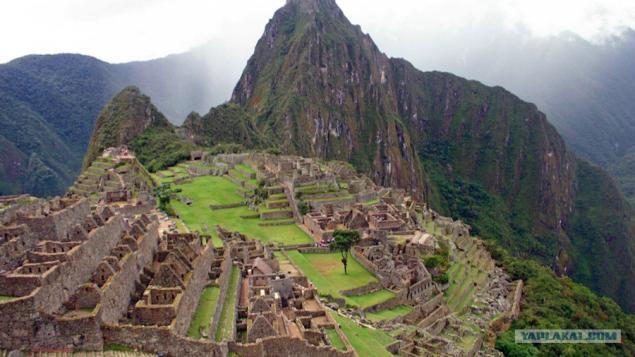
7. Tonis, Egypt
In VIII-th century BC. e. This legendary city was the gateway to Egypt - a port city full of incredible monuments, rich merchants and huge buildings. Now he is at the bottom of the Mediterranean Sea. Tonis decline began with the advent of Alexandria in 300-s BC. e., but in the end, the fall was literal, as the city swallowed by the sea, had once been the source of its wealth. Nobody knows how it happened, but in VIII-th century BC. e. the city was gone - maybe he was a victim of the earthquake consequences.
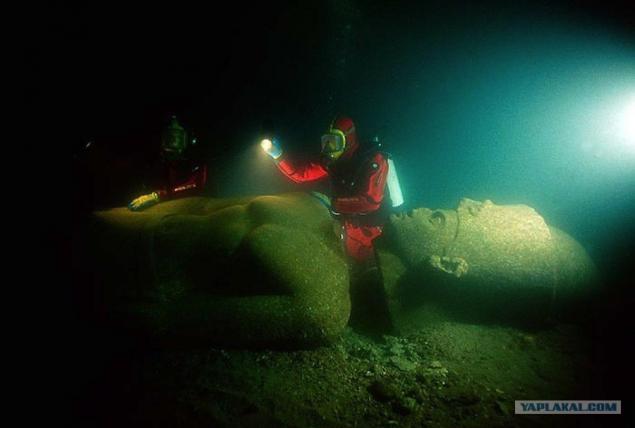
8. Great Zimbabwe, Zimbabwe
One of the biggest mysteries of southern Africa is a huge, walled city, known today as the Great Zimbabwe. The city was home to as many as 30 thousand people, the heyday of his arrival in the 1200-1450-ies famous district. e., when it was the heart of international trade in the region - even the locals traded with India and China.
Wealth flowed into the city from distant countries, but also the city flourished at the expense of the gold mined in the local mines, and huge herds of cattle. However, aware of the city is not everything - it is not clear how far the influence of the city and the more engaged the locals, but it is obvious that the city was technologically advanced. BBC describes the best preserved monument of the city as:
"Great Zimbabwe Monument erected in granite, is the parent rock of the region, in other words, the prevailing breed locally. During the construction of a dry mixing method was used stone, requiring great skill and specific technological training. Monument boundary wall about 20 meters high. Inside, there is a series of concentric passages and niches - one of them is the royal niche. Inside the building were found ceremonial battle axes and gold ornaments ».
As happened to many cities of the era, the heyday of the Great Zimbabwe followed a mysterious slump. Hunger is caused possibly excessive number of cattle in the surrounding lands, could contribute to its extinction. It is also possible that the main trade routes changed. If we knew more about the activities of the city and its trade partners, we could learn more about the cause of his downfall.
Source www.publy.ru

Source:
1. Çatalhöyük, Turkey
In 7500-ies BC. e. this city in Mesopotamia (modern Turkey) was inhabited by thousands of people. Historians believe that Çatalhöyük is one of the first human settlements in urban, but the culture of the people inhabiting it, is not like anything to which we are accustomed.
First of all, the city is built in the form of a honeycomb, where homes are separated by walls and doors are made in the roof. People walked these streets, rooftops, and to get into the living room, down the stairs. Doorways were often marked with bull horns and deceased family members buried in the floor in each house.
What happened to the people who lived in this city and its culture, it is unknown. Their architectural style seems to have been unique, though, archaeologists found many statues of the goddess of fertility, reminiscent of similar objects of worship found in other cities of the region. So it is quite likely that, when the city was abandoned, its culture is reflected among other peoples of the Mesopotamian region.
8 photo

2. Palenque, Mexico
Palenque - one of the largest surviving Mayan city-states. We can say that the town symbolizes the whole secret of their civilization before the Maya dominated the greater part of the territory of modern-day Mexico, Guatemala, Belize and Honduras, and then disappeared. Although the descendants of the Maya still thrive in Mexico and Central America, no one can say exactly why the Mayans abandoned the big cities and eventually abandoned them about the 1400s.
Palenque heyday came in the classic period of the Mayan civilization, about 700-1100 Tide years BC. e. As in many cities the Maya of Palenque were temples, palaces and markets. However, in Palenque is home to some of the most detailed sculptures and inscriptions left by the Mayan civilization from which to draw information about the history of this people: battles, rulers and everyday life. Theories of why this city and many other Mayan cities were abandoned, include war, hunger and climate change.

3. Cahokia, USA
Located on the other side of the Mississippi River opposite the modern city of St. Louis, Cahokia for hundreds of years has been the largest city in North America. Its inhabitants built huge earthen buildings, and some of them can be visited even today, as well as large areas served, apparently, as a market and meeting place. There is evidence that its residents have used very sophisticated farming methods and a few times a year redirected Mississippi tributaries for irrigation.
As in the case of the Maya people of Cahokia heyday came in the Tide 600-1400 years BC. e. No one knows why the city was abandoned by its inhabitants, as well as how the region can live in ancient times as many people - for hundreds of years the city's population was at least 40-thousand people.

4. Derinkuyu, Turkey
Derinkuyu - a huge underground city, existed in the early Byzantine era. Date of foundation of the city is unknown, but some sources suggest that this happened in the VII-th century BC. e. But really the city has grown in the period between 500-1000 mi years BC. e .: At this time there were five underground levels, where 20 thousand people were living with the cattle, and there were kitchens, churches and wineries.
Local residents have dug tunnels and rooms beneath their homes in the soft sand of volcanic rock in the central Turkish region of Cappadocia. In the Middle Ages it flourished here a whole underground civilization. City could serve as a model for any future community trying to survive after the apocalypse.
For centuries, people have fled to the area to find a safe haven from anti-Christian Romans, bandits, and later by anti-Christian Muslims. Inputs can be closed by massive stones, and ventilation shafts provided access to the air depth. In the end, even they were dug long tunnels for communication with other Derinkuyu underground cities in the region. At some point after the X-th century the city was abandoned, and in 1969 opened to the public.

5. Pompeii, Italy
There is ample historical record, is evidence that the Roman city of Pompeii was buried under a layer of rock after the catastrophic eruption of the volcano Vesuvius in the year 79 BC. e. It is known that the city was partially destroyed by an earthquake a few years before the eruption of the volcano and that many of the most impressive buildings at the time of the eruption have been erased from the face of the earth. We do not even know that Vesuvius began to smoke and caused an earthquake a few days before the fatal eruption. So what's the secret?
The fact that the perfectly preserved Pompeii to the smallest detail - in fact, they are the same as they were in the 79th year. Some of the details are completely alien to modern man, including miniature statues of penises, strange murals, funky art and living conditions that are radically different from the life of any modern city. It's one thing to read the history of ancient Rome, and quite another - to walk the streets of the Roman city, has not changed since the heyday of the empire. Secrets of everyday life are often much more interesting mysteries of the death of civilization.

6. Machu Picchu, Peru
On the Inca Empire is known not so much: they inhabited the territory of modern Peru, Chile, Ecuador, Bolivia and Argentina for hundreds of years before the invasion of the Spaniards destroyed almost all the cities and szhёgshih library records (Incas were the annals of using knots on ropes).
While we know a lot about technology Inca architecture and the development of agriculture - Machu Picchu contains evidence of the existence of all this - we still can not read what is left of the tapestry containing written reports. And we do not understand how they ruled a vast empire, which was not a single market.
That's right - Machu Picchu and other Inca cities are no markets than they are very different from most other cities built just around the market and public square. As such a strong civilization could exist without a market economy? Maybe someday we will know the answer

7. Tonis, Egypt
In VIII-th century BC. e. This legendary city was the gateway to Egypt - a port city full of incredible monuments, rich merchants and huge buildings. Now he is at the bottom of the Mediterranean Sea. Tonis decline began with the advent of Alexandria in 300-s BC. e., but in the end, the fall was literal, as the city swallowed by the sea, had once been the source of its wealth. Nobody knows how it happened, but in VIII-th century BC. e. the city was gone - maybe he was a victim of the earthquake consequences.

8. Great Zimbabwe, Zimbabwe
One of the biggest mysteries of southern Africa is a huge, walled city, known today as the Great Zimbabwe. The city was home to as many as 30 thousand people, the heyday of his arrival in the 1200-1450-ies famous district. e., when it was the heart of international trade in the region - even the locals traded with India and China.
Wealth flowed into the city from distant countries, but also the city flourished at the expense of the gold mined in the local mines, and huge herds of cattle. However, aware of the city is not everything - it is not clear how far the influence of the city and the more engaged the locals, but it is obvious that the city was technologically advanced. BBC describes the best preserved monument of the city as:
"Great Zimbabwe Monument erected in granite, is the parent rock of the region, in other words, the prevailing breed locally. During the construction of a dry mixing method was used stone, requiring great skill and specific technological training. Monument boundary wall about 20 meters high. Inside, there is a series of concentric passages and niches - one of them is the royal niche. Inside the building were found ceremonial battle axes and gold ornaments ».
As happened to many cities of the era, the heyday of the Great Zimbabwe followed a mysterious slump. Hunger is caused possibly excessive number of cattle in the surrounding lands, could contribute to its extinction. It is also possible that the main trade routes changed. If we knew more about the activities of the city and its trade partners, we could learn more about the cause of his downfall.
Source www.publy.ru

Source:
